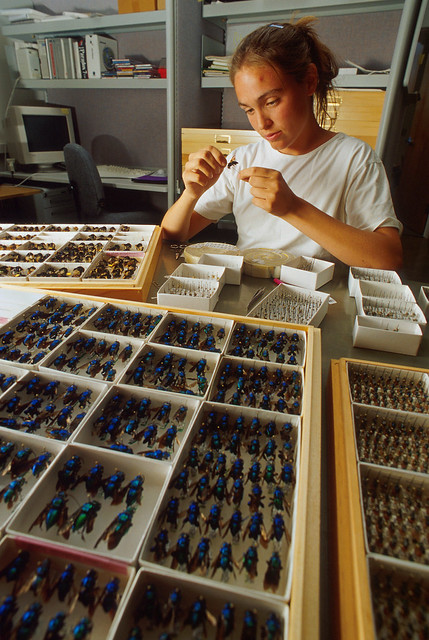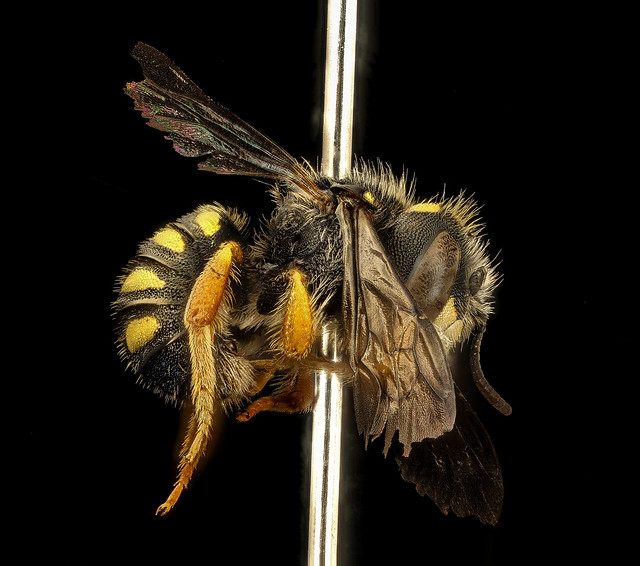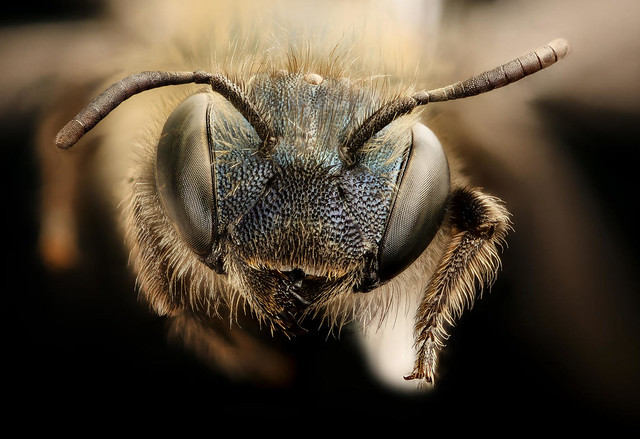
She leans over her dead subject and deftly pushes a pin through its body, securing it to the foam below. To be clear, this is not about a morgue or a serial killer. This is about taxonomy, or the science of identifying, classifying, and naming organisms. The woman in question is a scientist, and her pinned subject is a bee.
Characterizing species diversity is important to many aspects of scientific research and resource management today, including agriculture. But the practice is not a new one. In many traditions, knowing or assigning something’s ‘true name’ held incredible power (think Rumpelstiltskin or Adam and Eve). That knowledge remains powerful today. Using taxonomy, our scientists will identify the bee species she is collecting and preserve it in a biological collection. This practice helps us to better comprehend and more responsibly protect the world around us.
In pinning, identifying, and preserving the bee, she is making an entry into a reference collection of biological specimens that will provide valuable information about species’ identities and their environments long into the future. At the U.S. National Pollinating Insects Collection in Logan, Utah, USDA’s Agricultural Research Service (ARS) preserves over one million bee specimens.

This important collection helps us to better understand biodiversity: which species live where, and under what environmental conditions. When the specimens are collected using careful planning, they can also answer questions about trends through time like whether species’ ranges are changing due to environmental or other factors. Are some becoming rare or threatened? Some more common?
Understanding these dynamics allows us to determine and predict drivers of species and ecosystem health – important information for developing responsible conservation and natural resource management plans.
Developing management plans for responsible stewardship is important, not just to preserve natural ecosystems, but also for agricultural productivity and food security. Bees, both managed and wild, are our most important pollinators for agricultural crops such as almonds, blueberries, alfalfa, and apples; and recent research shows that healthy managed bees and species rich wild bee communities can significantly increase yield for crops that do not necessarily require animal pollination, such as cotton.
Getting a handle on existing bee communities and their diversity can be tricky. Bees are incredibly diverse with over 4,000 species (PDF, 1.5 MB) in North America alone! They are also notoriously difficult to identify, which can make extracting information daunting. ARS researchers and others are addressing this ‘taxonomic impediment’ by training the next generation of taxonomists, and investigating new techniques for species identification that use artificial intelligence and molecular genetics. In the end though, our ability to classify diversity in the world around us – and all the benefits that come with that knowledge – will always come back to biological collections, and the bee that our scientist is diligently preserving.
Interested in learning more? Check out ARS’ Logan Bee Lab. You may also get involved with bee taxonomy through citizen science tools and programs such as ARS’ Exotic Bee ID and the Bumble Bee Watch.

